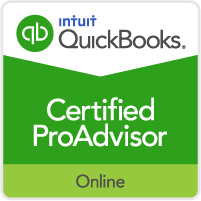This blog title is a slogan used by the world’s most popular personal and small business software maker. For my purposes as an adviser, I’m using it here to refer to the accounting for essential financial transactions between an employer and employee: payroll, taxes and employee benefits.
Small businesses have wide latitude in some areas of their financial operations (offering employee health insurance, for example) and little margin for variance in others (like employee wage taxes) . Yet the goal is the same for all: accomplish these transactions and reporting requirements timely and accurately at minimal time and expense.
The best practice
Today’s small businesses have enormously powerful tools available at minimal cost. To make the most of these technologies it almost always makes sense to integrate the small business banking, payroll, taxes and employee benefits under one platform with one internal person (often the small business owner) and one outside person (usually the accountant) in charge of these systems. Have a clear written agreement on who is responsible for specific tasks, a timeline and provisions to handle unexpected events. (A copy of my small business engagement agreements are available at tonynovak.com). Integration of services using the latest AI driven technology almost always saves time and money.
What can go wrong?
Of course, very few small business owners deliberately choose to fail on these essential accounting areas. Yet available data indicates that a high percentage have run into trouble in the past. Limited data using newer technology is far more favorable. As an anecdotal observation, the percentage of employers with a wage tax violation is somewhere around 25%. The percentage of clients with a violation using current wage tax platform is 0%. The technology works! The most common problem issue is lack of appropriate budget to accounting functions. A typical small business devotes 2% to 4% of its gross revenues on these requirements. These are benchmarks and certainly some fall outside that range. But businesses that go much below are typically the ones that run into tax, accounting or financial management trouble.
How to look for savings
The easiest way to is to request an initial analysis of your current financial accounting operations. An experienced adviser can compare this to the norms among similar small businesses and recommend approaches that are working better lately. This service is available for a small fee that is likely only pennies on the dollar of savings available. The analysis process from beginning to end likely takes a few discussions totaling an hour or two. When I handle these engagements I prepare a one page report for the business owner in checklist format so that we can discuss and easily prioritize the areas of potential gains. In today’s rapidly evolving technology environment, it makes sense to re-evaluate every two years or so. In most cases, business owners tell me they were not even aware of the existence of the most common cost-saving and time-saving tools.
My question to other small business owners: How do you plan to simplify the business of life? I would be pleased to hear your thoughts. Reach me online or call/text 302-404-3263.


Leave a Reply